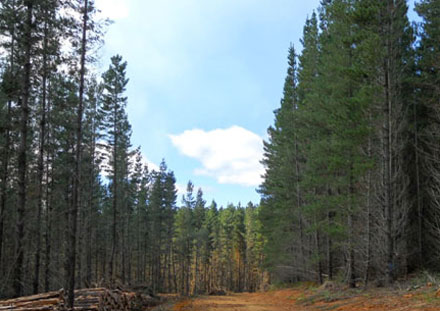
A joint research project by Tampere University of Technology’s mathematics laboratory and the Natural Resources Institute Finland (Luke) has developed a new method of recognising tree species based on laser scanning measurements. Source: Luke
The method enables the calculation of classification features in a completely new way.
The researchers from TUT and Luke received promising results when testing a full automatic method of recognising tree species.
In the future, this method can be applied to automate timber measurements during felling, selection of trees to be felled and optimisation of cutting.
“This method also allows for efficient measuring of the extensive materials needed in forest ecology research concerning tree species and the competitive relationships between their crowns,” said principal scientist Raisa Makepaa from Luke.
A method previously developed by TUT is used to recognise the tree species. In this method, individual trees can be extracted from the forest plot level point cloud data, and the structure of their crowns can be reconstructed as comprehensive 3D models.
The created tree models consist of consecutive cylinders, which determine the structure of the tree stem and branches as well as the branching structure.
“Previously, it was possible to make a rough distinction between the stem and the crown, based on the point cloud. Now, we are able to make out individual branches and analyse the characteristics of their diameters, volumes and branch angles,” said Markku Akerblom, member of the research team and a researcher at TUT.
For recognising the species, the researchers defined 15 classification features, the values of which were then calculated for each tree.
Some of these features are completely new and some have been used in previous studies. The new aspect is that now their value can be calculated more accurately, as they can now utilise information about the tree’s entire crown.
Furthermore, the magnitude of the testing data far exceeds any previous study.
Three different classification methods were tested, and three of the most common tree species in Finland – birch, pine and spruce – were included in the study.
“According to our results, automatic species recognition is possible with more than 95% accuracy. The purpose was not to find the best possible combination of features, but only to prove that classification based on detailed tree models is possible.
However, several combinations produced good results and all the classification methods had a maximum accuracy over 95%.
“The results also showed that just 30 trees per species is enough learning material for the classification,” said Mr Akerblom.
In the future, the developed method will be tested with more tree species and with measurements taken from more diverse forests. The tree models calculated based on the laser scanning data can be stored in a database, which can be utilised for even more accurate species recognition when the number of included samples grows.







